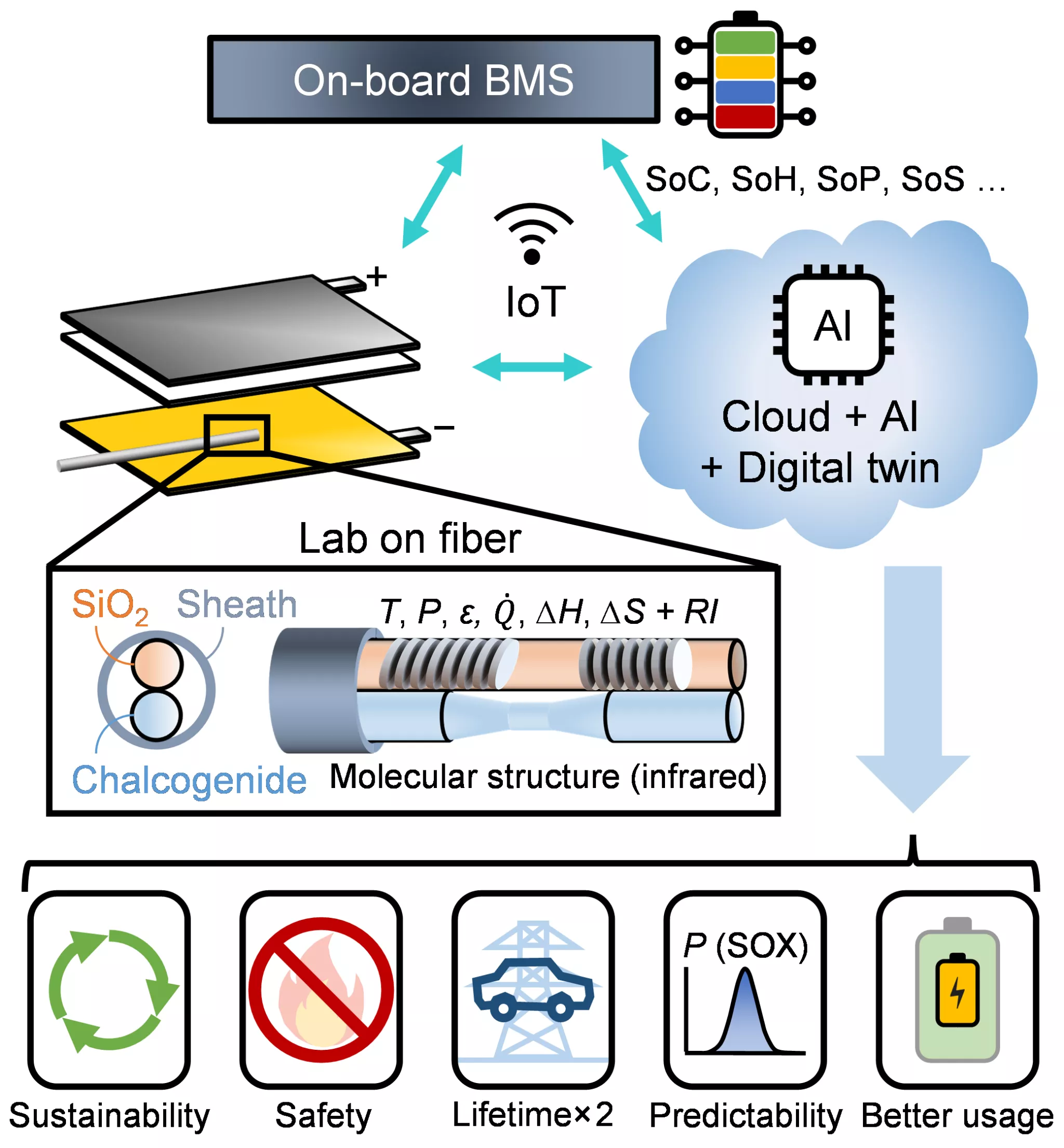Sensing: key to decarbonization?
Lithium-ion batteries have become predominant due to the insatiable and sophisticated demands of many industries, combined with the communications revolution of the Internet of Things (IoT). At the "macro" level, their use could lead to significant CO2 emission reductions for the power and transportation sectors. On the other hand, short-term considerations of their reuse or repurposing mean that maximizing the quality, reliability, lifetime, and safety (or QRLS) of cells at the device level is critical. To do this, ensuring battery monitoring becomes essential. This is a key and complex problem. Among the many existing strategies, diagnostic techniques are proving attractive. This is why Jiaqiang HUANG, Steven T. BOLES, and Jean-Marie TARASCON published a review article in Nature Sustainability recalling the different techniques of battery diagnosis including electrochemical and acoustic approaches, and highlighting the benefits of the new era of optical detection.
Acoustic detection, which is widely used in the medical field (ultrasound and others) and in the earth sciences (seismic detection), is based either on the study of mechanical waves emitted by cracks or on the delay generated by the propagation of an elastic wave through different media. Optical detection takes advantage of the use of optical sensors based on Bragg gratings inscribed on optical fibers (the same as those used for the Internet fiber). These sensors are widely used in civil engineering and have conquered the field of batteries in the last four years. They allow real time access to observables such as temperature, pressure, stress, as well as to thermodynamic parameters that were not accessible until now (heat of reaction, specific heat), all of which makes it possible to envisage much more advanced BMS battery management systems. The possibility to follow the in situ evolution of the chemistry within the batteries during their formation and aging stages is also mentioned as a last notable advance.
Apart from this technical aspect, the authors underline the benefits of diagnostics for the future realization of smart batteries with long life and minimal CO2 footprint. The batteries of the future could have their own electronic passport. The possibility of creating a "lab on the cell" thanks to the multifunctional Bragg sensors that can be slightly modified to take advantage of the plasmonic effect is also envisaged. These are the current studies that the authors are conducting.
The authors hope that this review will generate interest and curiosity from a wide range of disciplines as well as diversified industries beyond the battery sector.

Fig. 1 | Sensing for better battery durability. The convergence of these multidisciplinary approaches ("lab on fiber", internet of things, cloud, AI, digital twins, etc.) will lead to long-lasting, highly reliable and almost fully sustainable batteries.
For further information click here.

Dr. Jiaqiang Huang is a post-doc in the CSE laboratory (Collège de France, Paris), dedicated to battery sensors and the unraveling of thermal and chemical events inside batteries. After an academic background (Bachelor and PHD) in Mechanical Engineering at Shanghai Jiao Tong University and the Hong Kong University of Science and Technology, respectively, Jiaqiang had a first post-doc experience on microparticle anodes for Na- and K-ion batteries at Hong Kong Polytechnic University, after which he joined Collège de France in 2018. As part of the RS2E, Jiaqiang has published three first-author papers in Nature Energy, Journal of Electrochemical Society, and Energy & Environmental Science, and is still working on two more papers to be released soon. With his post-doc ending next week, Jiaqiang already has new plans; indeed, he has setting up his own group (https://antngg.wixsite.com/my-site) at the Hong Kong University of Science and Technology (Guangzhou) as an assistant professor from January 2022. He will continue the research on battery sensors by converging electrochemistry, optics, and data science to improve batteries in terms of safety, reliability, predictability and performance.
From this experience at RS2E, Jiaqiang Huang will remember: “I am very proud of being a member of the RS2E and it is always nice and inspiring to discuss science with the people from RS2E”.